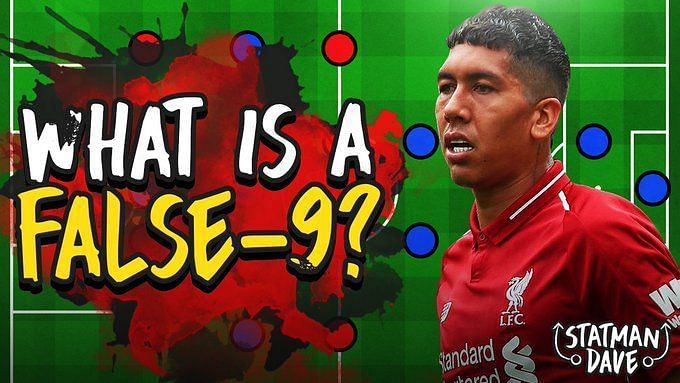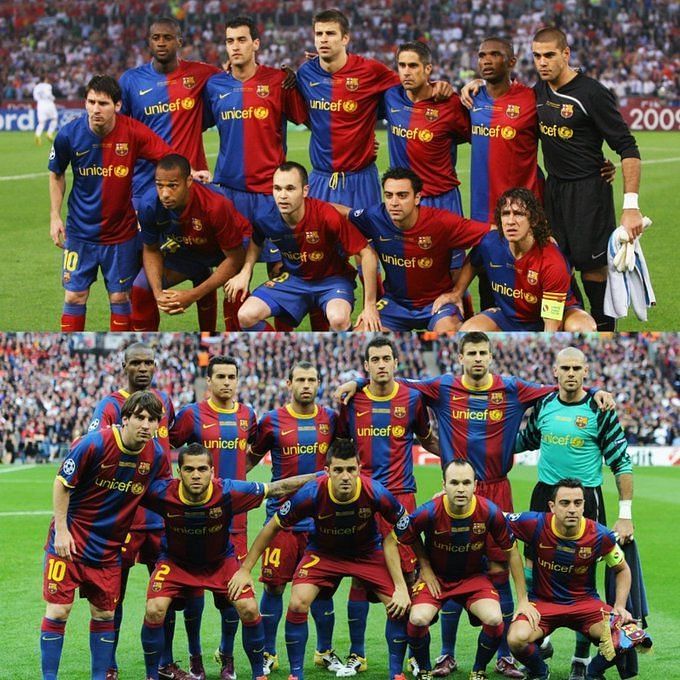
Why is the 4-3-3 formation so popular?
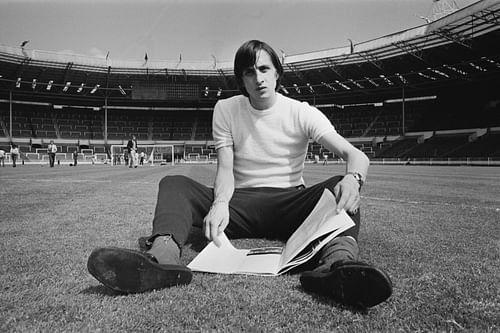
Many of the top sides in Europe use the 4-3-3 formation. The modern interpretation of this formation can be best attributed to the 'Total Football' of Rinus Michels' Dutch National Team.
The fluid formation was also implemented by former Ajax and Barcelona legend Johan Cruyff. It is popularly remembered for being used by Pep Guardiola during his tenure as manager at Barcelona. It also seems to be his preferred set-up at Manchester City.
Jurgen Klopp is another beneficiary of the formation. Although he utilizes it with a different structure(with a false 9), the German has seen tremendous success. in this set-up.
Club football is not the only form of the game where the formation has been utilized successfully. Italy, the most recent champions of the Euros, have also used it to good effect.
The 4-3-3 has typically been used by coaches who want their teams to dominate the ball and control the tempo of the game. It is an attacking formation and while it has benefits, like any other formation, it also has weaknesses.
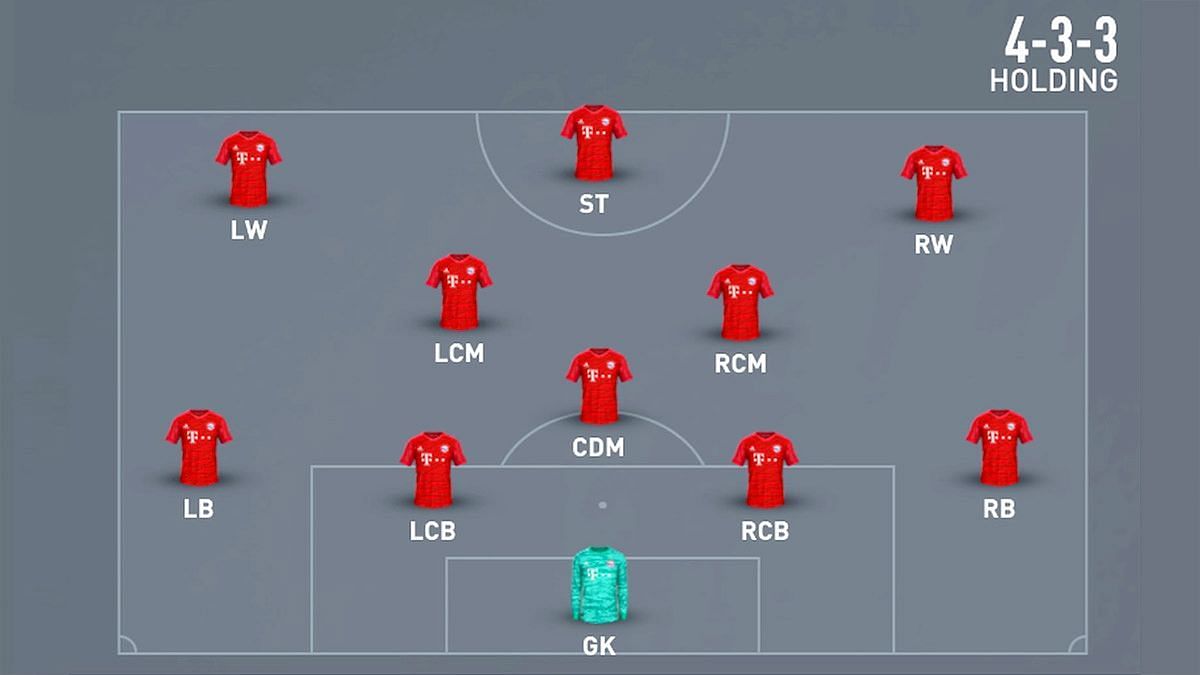
Strengths
The formation naturally creates triangles all over the pitch. The benefit of these triangles is the fact that the player with the ball can play a simple pass at all times.
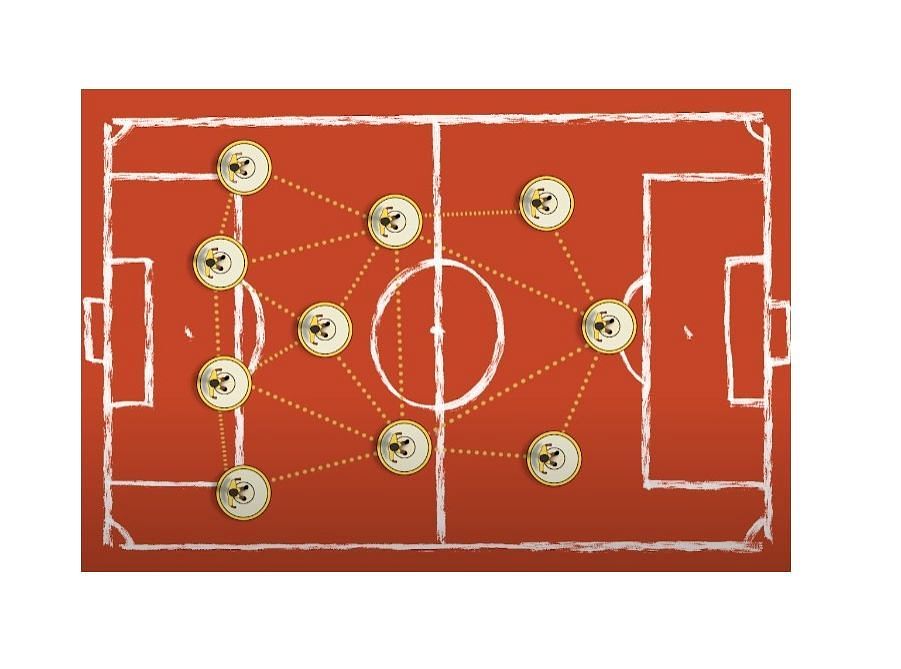
In theory, the player with the ball, due to the existence of a triangle, will have a minimum of 2 short passing options at any given time.
Another benefit is offered in the form of simple solutions to positional rotations. When the full backs travel high up the pitch and the wingers tuck in, the CM on the attacking side can cover the run of the full back by dropping out wide.
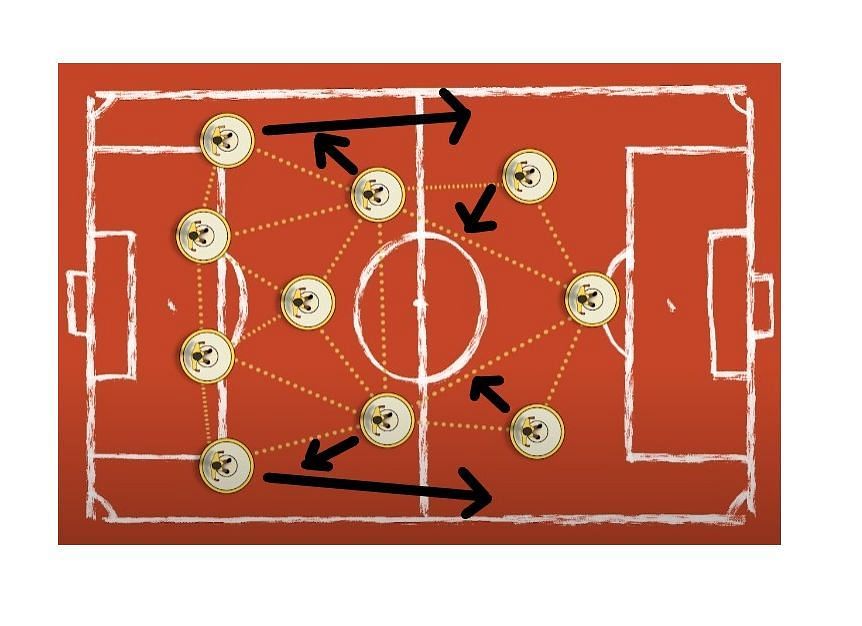
The formation also allows the CDM to drop back into a back three. It then facilitates the wide fullbacks to get further up the pitch and create overloads in wide areas.
The ability of the formation to field three central midfielders is one of its greatest strengths and one of the reasons for its popularity. A conventional 4-4-2 has only two central midfielders. Clearly, there is a numerical advantage in central areas for the team that uses three midfielders against a team the 4-4-2. This enables them to dominate the midfield battle and therefore control the game.
The fluidity of the 4-3-3 is also a huge advantage, especially while out of possession. The wingers can tuck in to create a pseudo 4-5-1 which can create a host of problems for the opposition. One of these problems is the deprivation of the ability to play line-breaking passes through the midfield as the wingers cut off these passing lanes.
Weaknesses
The 4-3-3 offers a great starting point in order to dominate the ball and even recover the ball by counter-pressing. Some of the strengths of this particular formation can also turn into weaknesses.
If there is a lack of defensive discipline from the wingers, the once favorable front three can be quickly taken advantage of.
This was the case as PSG were beaten by Manchester City in the Champions league due to the low defensive work rate of PSG's attacking trident.
The ability of the three frontmen to recover and get back into the defensive shape is paramount.
The use of three players upfront, contrary to the traditional 2 strikers may also cause issues. The lone striker can often be left isolated if the wingers stay too wide or if the central midfielders fail to join the attack.
The fluidity in shape, while in possession, can make it quite hard for the opposition to control the game. However, it also increases the complexity of decision making and positioning for the central midfielders.
Concluding Thoughts on the 4-3-3 formation
The dominance of Pep's Barcelona side had definitely increased the interest shown in the 4-3-3 formation. His Manchester City team has made people even more infatuated with this beautiful system.
Many coaches at all levels have tried to implement this style of play. The system is very hard to get right as it requires players who are technically gifted. However, it can be devastating when used properly.
